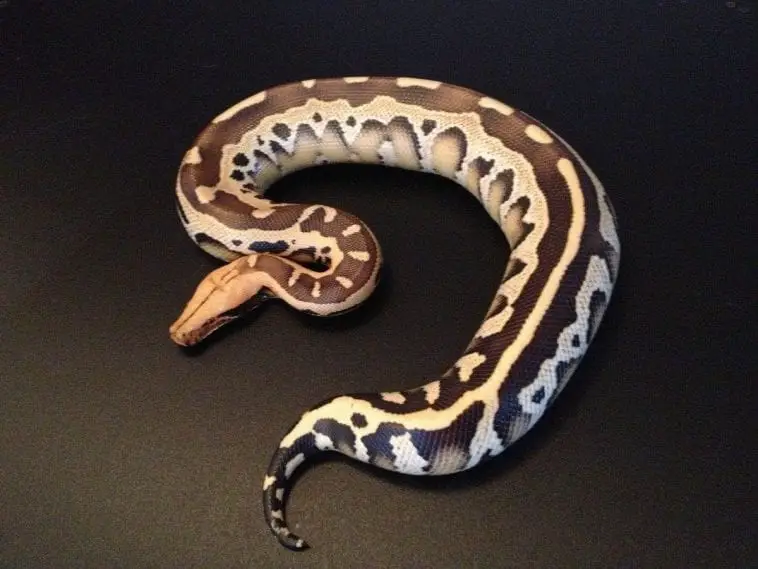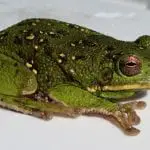Scientific Facts
| Common Name | Borneo Short-Tailed Python |
| Scientific Name | Python breitensteini |
| Life Span | More than 20 years in captivity |
| Size | 3 to 5 feet long up to 6 feet and weigh 20 pounds or more |
| Habitat | Low elevations near the edge of swamps |
| Country of Origin | Borneo |
Physical Description
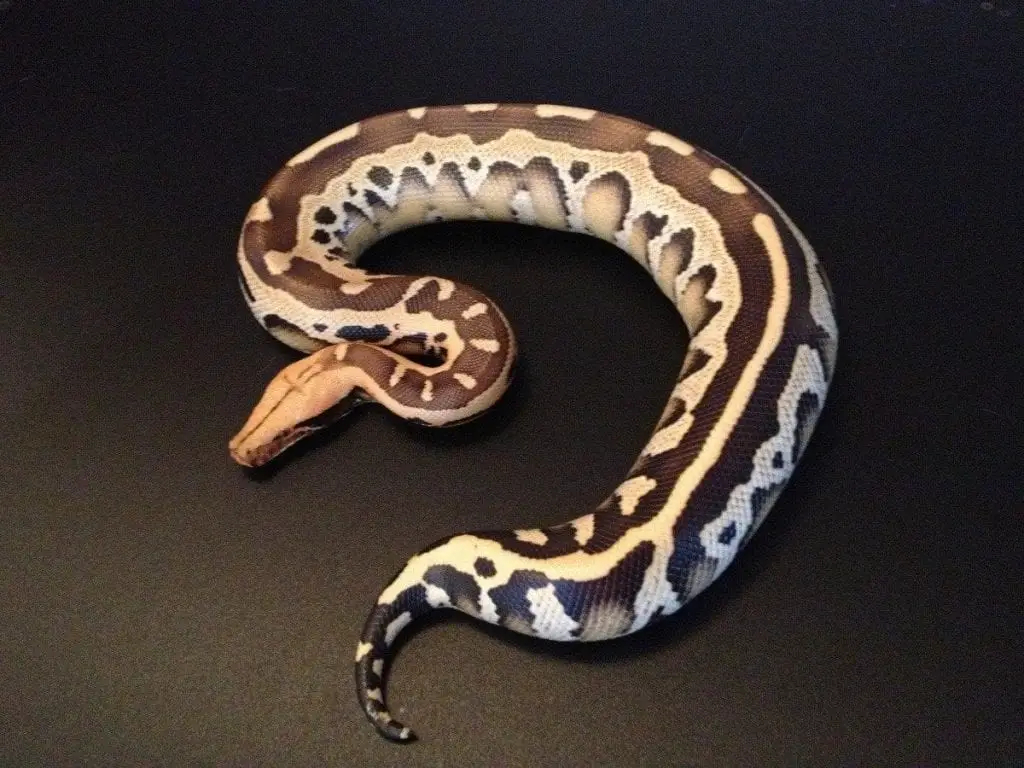
The Borneo Short-Tailed Python is a popular pet snake. It is non-venomous and is native only in the island of Borneo. It is a muscular snake that has been known to grow up to 3 to 5 feet while some specimens and grow longer than 6 feet.
Female Borneo short-tailed pythons are larger compared to females. This snake has a broad head with many thermoreceptive pits that help them smell the heat of their prey. The term ‘’short-tailed’’ is because of this snake’s short and tapering tail.
The Borneo short-tailed python’s color patterns are tan with brown blotches. These marks are distinct to each snake. There are some reports of albinism in this snake species, and some breeders also report pythons with lighter coloring with more yellow color than brown. While still in juvenile form, the pythons have more contrasting patterns compared to adults.
The scientific name breietensteini is to honor German physicist Heinrich Breitenstein. He was also a naturalist and loved collecting snake and amphibian species in Borneo.
Life Span
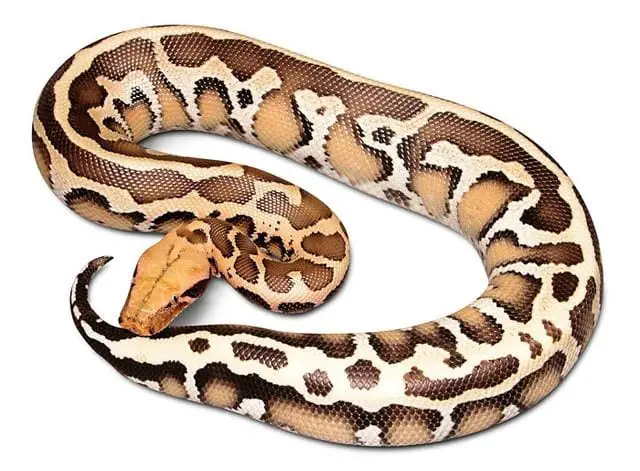
Borneo Short-Tailed Pythons have three life stages just like other pythons and snakes
Hatchlings
Borneo Short-Tailed Pythons are blood pythons and are oviparous snakes. Females lay eggs around 12 to 16 eggs in one clutch, and after a few weeks, the hatchlings break the shell open. Hatchlings are light in color but already have pronounced blotches on the skin.
Juveniles
Juveniles look exactly like their parents but are just smaller but with contrasting patterns.
Adults
Adults are huge with a muscular body and a broader head. Adults are ready to mate in just a few years of age.
Eating Habits
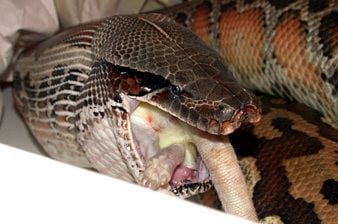
Pythons like the Borneo Short-Tailed Python, are carnivorous animals. In the wild, these will feed on rodents and other smaller animals. In captivity, you can feed your python small mammals, including mice, hamsters, rats, and gerbils. During the hatchling and juvenile stages, daily feeding is needed. Adults, on the other hand, may only need to be fed only once a week.
Sleeping Habit
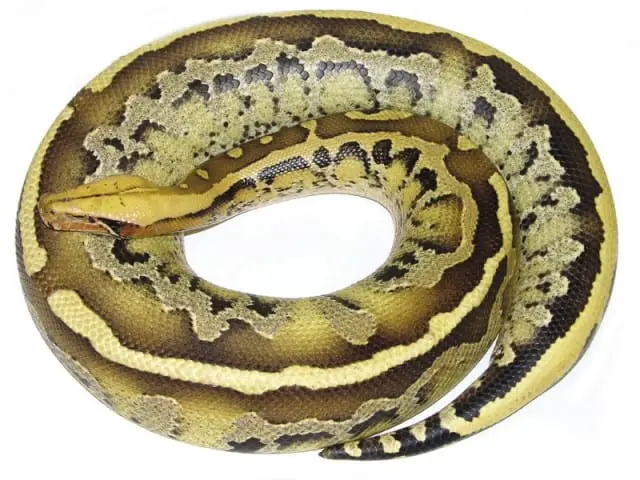
The Borneo Short-Tailed Python is nocturnal; therefore will sleep during the day and are active at night. Keep your snake’s enclosure inside a quiet area and never in the living area where there’s high traffic especially during the day.
Place branches, rocks, and caves where it can sleep during the day. It lives in a moist environment in the wild, so small rocks or sand are the best bed for your python to sleep in.
Water
Short-tailed pythons need fresh water to drink. Place water in wide bowls made of ceramic or in clay. The python will simply slither around and lick water from the bowl anytime it wants to. Change the water inside this bowl often.
Snakes like pythons don’t swim, so it won’t require deep water inside its tank. It prefers to be on land to bask under the sun; Pythons are unable to regulate their temperatures because these are cold-blooded.
Development, Reproduction, and Breeding
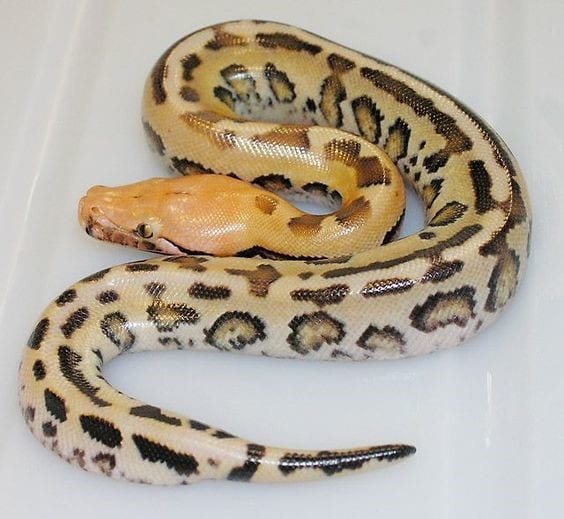
Borneo short-tailed pythons will become sexually mature by the time they reach their 18 months of age. Breeding happens from November to March yearly.
During the breeding season, feeding should be stopped. You must establish your male and female snakes and make sure that these are in their excellent conditions before breeding.
Experts induce breeding by reducing lighting schedules to 8 to 10 hours and then reducing nighttime temperatures to around 70 degrees Fahrenheit. When the tank temperature is stable, introduce the male to the female, and regularly mist the tank to induce mating.
Females will shed after 20+ days post ovulation while her eggs are lad around 30 days after shedding. A clutch can have 8 to 30+ eggs. When incubated in temperatures of 88 to 90 degrees Fahrenheit, the eggs will hatch in just two months.
Common Health Problems
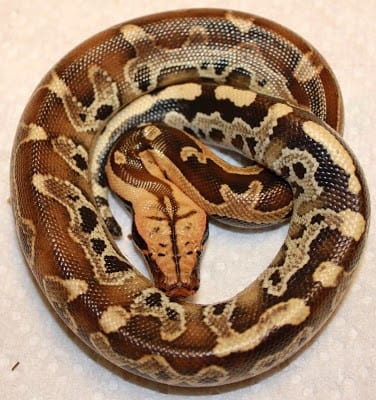
Here are the most common health issues of spotted pythons:
Skin conditions
Your pet spotted python may become affected by several skin conditions, including abscesses, blisters, cuts, mites, and ticks.
Internal parasites
A python can pick up parasites from other reptiles and also from infected food. Some signs of internal parasites are lack of appetite, regurgitation, lethargy, and an overall tired and unwell look. You must take your pet to the vet to have it checked for parasites.
Regurgitation
Regurgitation is usually due to stress, holding, or handling the snake soon after it has eaten and because of an undiagnosed and untreated illness. This may be prevented by avoiding holding your snake after feeding, Have your pet checked by the vet for any untreated or improperly treated illness.
Respiratory conditions
Signs of respiratory conditions include lethargy, coughing, open-mouth breathing, wheezing, or unusual clicking noises. Increase the temperature inside the tank to stimulate the snake’s immune response. Move the cage to another part of the room or house away from other snakes and pets.
Shedding problems
Shedding is a problem to pythons, especially when the snake and tank are not properly hydrated. The skin in the body and tail may shed easily, but around the eye or the eyecaps and tail can take time and may cling to the body if it is too dry.
Place a bowl of water inside the tank to improve humidity inside the enclosure. Soak the snake in warm water. Do this once a day.
Preventing Illness
Borneo Short-Tailed Pythons are generally healthy, but if you overlook things related to its care, it can become very sick. The most important thing is to maintain tank cleanliness. Clean the tank with a strong but safe cleaner; follow the instructions carefully. Replace (don’t reuse) bedding or substrate.
Keep the tank conditions perfect. Temperatures inside the tank should be between 86 degrees Fahrenheit during daytime and 80 degrees Fahrenheit at nighttime. Place a basking area that should be 5 to 7 degrees warmer than the rest of the tank area.
Feed your pythons the right food. Avoid wild-caught food because these may contain toxins. Always handle your python carefully to reduce stress and prevent regurgitation.
Behavior
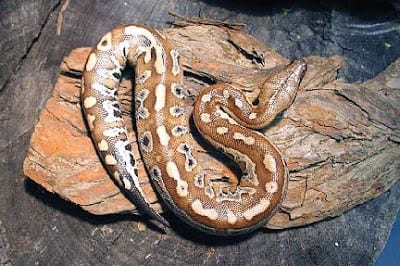
Understand your spotted python better by getting to know its natural behavior. Here are some important facts:
Gentle and easy to handle
You may have heard that blood pythons like the Borneo Short-Tailed is hissy and aggressive, but these behaviors are present in wild-caught snakes. Also, wild-caught pythons can become cage aggressive or may attack or bite once you open the cage and reach for it.
To avoid these, take care of captive snakes and handle your snake early. And if you’re handling a new snake, use a snake hook to pick it up or take it out of its tank or cage.
Will bite when threatened
All snakes will bite when threatened. Even if your pet is well-trained, it can bite if it thinks that the person who is about to hold him is a threat. The bite of a python is very powerful because of its very sharp fangs. Pythons are non-venomous but will bite and hold so the wound will be fatal.
Musking
Musking is a strong and unpleasant smell that pythons release when it feels threatened when handled. The smell is a combination of urine and feces and could be strong enough for a handler to release the snake. This usually happens in the wild-caught snake, but captive snakes may also musk especially when it feels stressed and threatened.
Hibernation
Pythons hibernate and also estivate. Estivation is the unusual behavior of hiding out even during the summer months. During these times, the snake will have a very low metabolic rate and are in a state of deep sleep.
Shedding
Shedding is a sign of a healthy python. Borneo Short-Tails shed once a month, and during the shedding process, the skin grows to accommodate the increasing size of the snake. Shedding happens more often in young or juvenile pythons and less frequent in adult ones. However, if the snake is not shedding, then this may be due to malnutrition or other medical issues.
Habitat
You can place juveniles in plastic containers like Rubbermaid racks. Adult males and females should be in a large tank or cage with larger cages for females. Cages should be adequately covered and locked because this snake is strong and can easily remove the top section of a tank. For substrate, you can use cardboard, newspaper, coconut husk, paper towels, and other similar materials.
Temperature and Humidity
Temperatures inside the tank should be between 86 degrees Fahrenheit during daytime and 80 degrees Fahrenheit at night. The basking area should be 5 to 7 degrees warmer than the rest of the tank. Use under tank heaters to keep the temperature constant. Keep the humidity at 55% and slightly higher during shedding.
Availability – Where to Get One?

You can get a Borneo Short-Tailed Python from a local exotics pet store or an online reptile shop. It’s important to buy your pet from a reputable dealer or pet store to guarantee good health. Spotted pythons can cost anywhere from $250 to $500 depending on the size, gender, and skin patterns on the snake.
How to Care for a Borneo Short-Tailed Python?
Remember the following when caring for a Borneo Short-Tailed python
- Keep your tank clean at all times. Spot clean daily, change bedding weekly, or more often to avoid diseases.
- Monitor tank temperature and humidity with a digital thermometer and hygrometer.
- Keep a dish of water inside the tank for improving humidity. Mist the inside of the tank more often when the snake is shedding.
- Feed your python insects, arthropods, and lizards. Since pythons will swallow their food whole, you can use this opportunity to sneak in some supplements or multivitamins.
- Handle your pet early to prevent aggression. Start during the juvenile stage but always use a snake hook to remove it from its cage.
FAQd
Will Borneo Short-Tailed PSythons bite?
Pythons are like most snakes; they will bite when they feel threatened. This is why early handling is important in captive snakes.
What do you do when you’re bitten by a python?
Pythons will bite and release. Clean the wound with water and soap and afterward, apply disinfectant.
How long can you tame a python?
It depends on your time and dedication. The key is constant and careful handling.
Can a python transmit disease?
Wild pythons can transmit parasites; therefore, you should never handle wild pythons or any snake.
Will a python eat frozen food?
No, because they are used to live and warm food.

